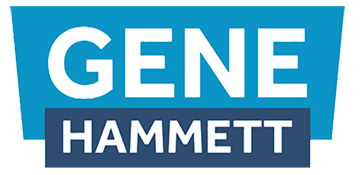In this episode, I sit down with Shashank Dubey, Co-founder and Chief Revenue Officer at Tredence, to explore what makes Empowering Leadership a cornerstone of high-velocity growth. Tredence, a global leader in data science and AI consulting, is ranked No. 1,681 on the 2024 Inc. 5000 list, highlighting its consistent trajectory of success. We dive into how Empowering Leadership unfolds through granting teams autonomy, building a culture of continuous learning, and staying laser-focused on outcomes over activity. Shashank shares actionable strategies that empower leaders to cultivate freedom with accountability and drive innovation at scale. Tune in to uncover how Empowering Leadership fuels sustained impact and builds companies that thrive.
- Introduction to Empowering Innovation
- The Importance of Data Science
- Leveraging AI for Business Solutions
- Driving Innovation in Large Organizations
- Fostering an Entrepreneurial Spirit
- The Role of Ownership in Business
- Encouraging Continuous Learning
- Cultivating a Culture of Innovation
From Insight to Impact: Shashank Dubey on Closing the Data Science Gap
In this interview, Gene Hammett speaks with Shashank Dubey, the founder and CEO of Tredence, a data science consulting firm. Their discussion centers around empowering innovation within organizations, a crucial element for businesses looking to thrive in today’s rapidly evolving technological landscape. Dubey highlights the essence of Tredence, which originated from the need to bridge the gap between data insights and actionable results. He explains how the company aims to solve complex business challenges by leveraging data science, analytics, and AI, ensuring that clients can realize the value from their investments in data. Dubey elaborates on the importance of productionizing insights rather than simply generating them, emphasizing that many businesses struggle with the transition from data analysis to practical application. This gap, which Tredence seeks to address, is referred to as the “last mile” in data science. Gene Hammett agrees with Dubey’s sentiment about the powerful storytelling ability of data when utilized correctly. Their conversation transitions into the role of artificial intelligence in industry today, with Dubey asserting that both AI and traditional machine learning play vital roles in solving business problems, such as enhancing supply chain efficiency, marketing strategy, and customer experience.
Building a Culture of Innovation: Shashank Dubey on Empowering Employees at Tredence
Addressing the actionable aspects of innovation, Dubey discusses Tredence’s culture, which prioritizes three core tenets: continuous learning, collaborative experimentation, and fostering an entrepreneurial mindset among employees. He articulates the importance of creating an environment where employees are encouraged to experiment and learn from failure, asserting that innovation cannot thrive without a tolerance for risk-taking and mistakes. He notes that fostering a culture of innovation is not just about providing resources, but also about instilling the principles of agility and resilience within the workforce. Highlighting organizational structure, Dubey mentions the inventive processes cultivated at Tredence, including a “Shark Tank” style setup where employees can pitch their innovative ideas for funding, thus empowering them to take ownership of their projects. This decentralized approach to innovation allows initiatives at all levels of the company to flourish and adapt swiftly. He shares specific examples where employee-driven innovations led to significant improvements in productivity and efficiency within the company.
Purpose-Driven Growth: How Tredence Invests in Continuous Learning and Meaningful Work
The discourse then pivots to continuous employee development, with Hammett probing into how Tredence encourages its workforce to engage in ongoing learning. Dubey points out initiatives such as “You Learn, We Pay,” where employees receive allowances to pursue educational courses relevant to their interests and careers. Additionally, the company promotes soft skills and experiential learning, emphasizing that mastering communication, leadership, and collaboration is equally as vital as technical skills in modern business environments. Dubey stresses the importance of meaning in work, arguing that beyond fun and financial reward, employees increasingly seek purpose in their roles. He details how Tredence’s emphasis on meaning contributes to employee engagement and motivation, serving as a detangler from the distractions commonly faced in today’s information-heavy workspaces. The resulting culture not only fosters innovation but also reflects a holistic approach to employee satisfaction.
Shaping the Future Workforce: Leadership, Innovation, and the Power of T-Shaped Professionals
As the interview concludes, Dubey reinforces the notion that cultivating a workforce of T-shaped professionals—those with a breadth of knowledge across fields and deep understanding in specialized areas—is essential for sustained innovation. He underscores the vital role leaders play in shaping this culture and facilitating the flow of ideas, thereby reducing noise and enhancing the quality of interconnections that inspire innovative thought. Overall, the interview encapsulates a dynamic exchange between two leaders who share a vision of enabling employee empowerment through innovation, learning, and meaningful work—an essential formula for future success in any organization.



